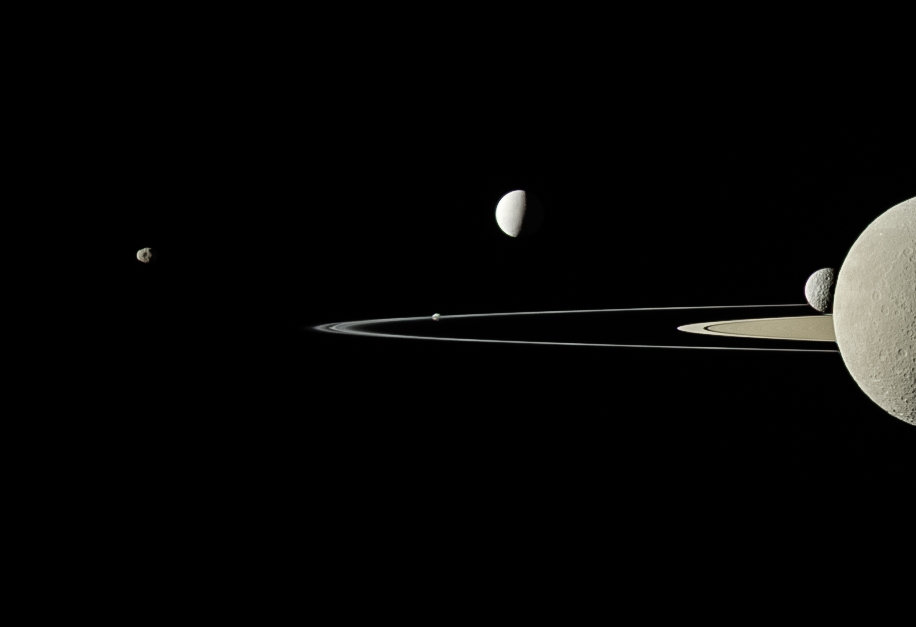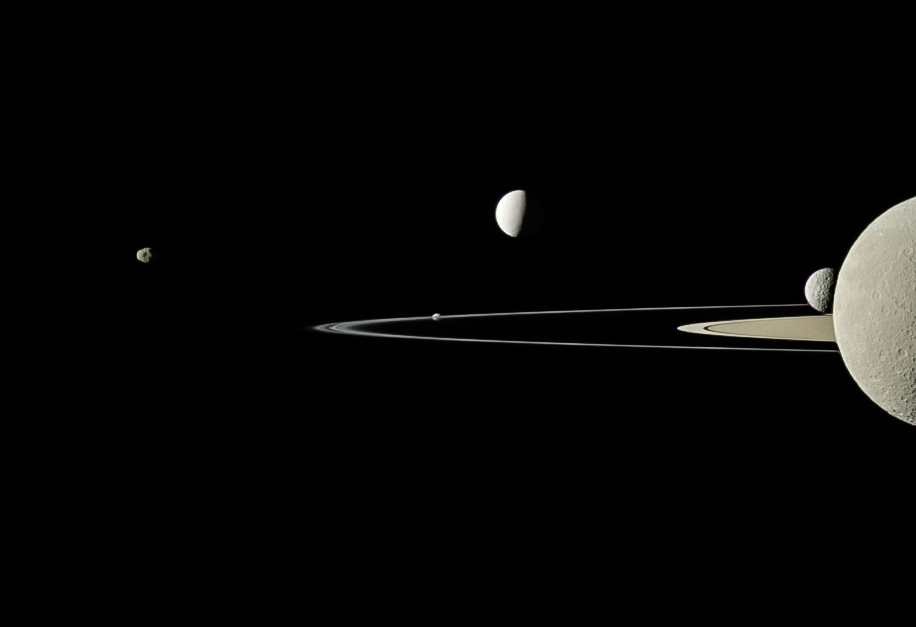Five Moons and Saturn

| Credit | NASA/JPL-Caltech/Space Science Institute |
|---|---|
| Language |
|
On July 29, 2011, Cassini captured five of Saturn’s moons in a single frame with its narrow-angle camera. This is a full-color look at a view that was originally published in September 2011 (see PIA14573).
Moons visible in this view: Janus (111 miles, or 179 kilometers across) is on the far left; Pandora (50 miles, or 81 kilometers across) orbits just beyond the thin F ring near the center of the image; brightly reflective Enceladus (313 miles, or 504 kilometers across) appears above center; Saturn's second largest moon, Rhea (949 miles, or 1,528 kilometers across), is bisected by the right edge of the image; and the smaller moon Mimas (246 miles, or 396 kilometers across) is seen just to the left of Rhea.
This view looks toward the northern, sunlit side of the rings from just above the ringplane. Rhea is closest to Cassini here. The rings are beyond Rhea and Mimas. Enceladus is beyond the rings. The view was acquired at a distance of approximately 684,000 miles (1.1 million kilometers) from Rhea and 1.1 million miles (1.8 million kilometers) from Enceladus.
The Cassini spacecraft ended its mission on Sept. 15, 2017.
The Cassini mission is a cooperative project of NASA, ESA (the European Space Agency) and the Italian Space Agency. The Jet Propulsion Laboratory, a division of the California Institute of Technology in Pasadena, manages the mission for NASA's Science Mission Directorate, Washington. The Cassini orbiter and its two onboard cameras were designed, developed and assembled at JPL. The imaging operations center is based at the Space Science Institute in Boulder, Colorado.
For more information about the Cassini-Huygens mission visit https://saturn.jpl.nasa.gov and https://www.nasa.gov/cassini. The Cassini imaging team homepage is at http://ciclops.org.

